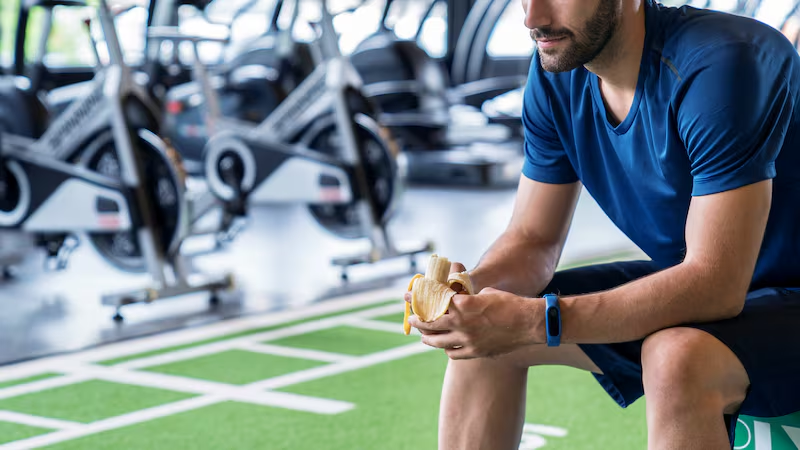The United States boasts a vibrant fitness culture. Nearly one-fifth of the population is actively engaged in sports and exercise, according to the Bureau of Labor Statistics.
Whether you’re a gym rat or a weekend warrior, prioritizing self-care is essential to maximizing your workouts, preventing injuries, and achieving your fitness goals.
This comprehensive guide provides fitness enthusiasts with the tools and knowledge to optimize their training and recovery, all while promoting overall well-being.
Fuel Your Fitness Engine

The food you select serves as the fuel for your workouts and overall well-being. Opting for a balanced diet abundant in essential nutrients is essential for optimal health and performance.
Additionally, consider pre-workout supplements for a potential boost in energy and performance. However, remember these are optional.
According to WebMD, studies suggest consistent use of supplements offers better results than occasional use.
Potential benefits include longer workouts and reduced fatigue. However, be cautious of side effects like digestive issues, heart irregularities, and blood sugar changes.
Make Rest and Recovery a Priority
Rest and recovery actively contribute to your fitness success. Quality sleep is paramount. During sleep, your body undergoes repairs, releases hormones essential for muscle growth and fat metabolism, and recharges your energy reserves.
Don’t underestimate the power of active recovery. On rest days, low-impact activities like yoga, swimming, or walking get your blood flowing, promote circulation, and aid in muscle recovery.
This helps your body clear waste products produced during intense workouts and prepares it for the next training session.
Finally, listen to your body. It’s your best guide – pushing through pain is a recipe for injury. Taking rest days when you’re feeling fatigued or sore allows your body to catch up and prevents overuse injuries.
Remember, rest and recovery aren’t signs of weakness. They’re crucial investments in your long-term fitness journey.
Manage Sports Injuries
Sports participation is on the rise across the country. States like Texas have projected revenue of over $2.7 billion in fitness and recreation centers by 2024.
This surge in activity goes hand-in-hand with the potential for sports injuries. However, with proper prevention strategies and treatment plans, you can stay active and minimize setbacks.
Prevention is the first line of defense. Including warm-up and cool-down routines in your exercise regime is essential.
Additionally, using the correct form during exercises and progressively increasing training intensity can prevent overuse injuries, which are common among fitness enthusiasts.
For persistent pain or limited mobility, consulting a healthcare professional is critical. Additionally, sports massage in Austin can aid fitness enthusiasts in Texas by relieving pain and promoting healing.
Massage therapy serves as a popular adjunct to traditional treatments. Sports massages improve circulation, reduce muscle tension, and enhance flexibility, benefiting both injury recovery and overall performance.
According to Mantis Massage, given Texas’ robust fitness industry, the availability of expert care supports fitness enthusiasts in managing injuries.
Utilizing local resources like sports massage can help athletes return to their routines safely and efficiently, maintaining their active lifestyles.
Soothe Aches and Pains

Even the most dedicated fitness enthusiasts experience aches and pains after pushing themselves through intense workouts. The good news is you have a toolbox filled with simple strategies to find relief and expedite recovery.
Self-massage techniques like foam rolling and massage balls are your first line of defense. By applying pressure to specific tight muscle areas, you can break down knots, improve blood flow, and reduce soreness.
For enhanced care, consider booking a professional Austin massage. Austin boasts a thriving massage scene with therapists specializing in various techniques, from deep tissue to sports massage, offering a deeper level of muscle work.
Regular stretching is another key weapon in your anti-pain arsenal. Tight muscles pull on joints, causing discomfort. Integrate dynamic stretches before exercising to warm up muscles and follow up with static stretches afterward to enhance flexibility.
Finally, leverage the benefits of heat and cold therapy. Heat therapy, utilizing a heating pad or warm compress, helps relax tight muscles and enhance circulation in areas of discomfort. Cold therapy, with an ice pack, is effective for reducing inflammation and pain after injuries.
Remember, these strategies work best when combined. After a tough workout, foam roll or use a massage ball to target tight spots, then follow it up with static stretches. For deeper muscle work, consider treating yourself to a professional massage.
Optimizing Your Fitness Journey – The Mind-Body Connection
The mind and body are intricately linked. Chronic stress, for example, can manifest as muscle tension and hinder performance. To optimize your fitness journey, consider incorporating techniques that address both physical and mental well-being.
Make stress management a priority by incorporating techniques such as meditation, deep breathing exercises, or spending time in nature.
Meditation quiets the mind and promotes relaxation, while deep breathing exercises calm the nervous system and reduce muscle tension. Immersing yourself in nature provides a potent way to destress and regain mental clarity.
Additionally, visualization exercises can significantly improve focus and motivation. Imagine yourself executing exercises flawlessly or crushing your personal best. By mentally rehearsing success, you prime your mind and body for peak performance.
Frequently Asked Questions
How do I become a fitness enthusiast?
Start by setting clear goals, finding activities you enjoy, and creating a consistent exercise routine. Stay motivated by tracking progress and surrounding yourself with supportive peers or joining fitness communities.
Why is fitness a passion?
Fitness has become a passion because it offers numerous physical, mental, and emotional benefits. Regular exercise improves health, boosts mood, reduces stress, and increases energy levels. It provides a sense of achievement, empowerment, and self-confidence.
How can one maintain fitness effectively?
To maintain fitness effectively, establish a balanced routine that includes regular exercise, nutritious eating, and sufficient rest. Focus on activities you enjoy, set achievable goals, and stay consistent. Listen to your body, adjust your routine as needed, and prioritize overall well-being for long-term success.
In conclusion, you now possess a comprehensive guide to optimize your fitness journey. By incorporating the strategies outlined here, you’ll be well-equipped to manage aches and pains, prevent injuries, and maximize your performance.
Remember, prioritize rest and recovery, listen to your body, and explore the benefits of mind-body practices like stress management and visualization. With dedication and these tools at your disposal, you’ll be well on your way to achieving your fitness goals.

Jean Smith is a fitness enthusiast and blogger who focuses on fitness and a healthy lifestyle. She is passionate about assisting people in living healthier lifestyles and is constantly on the lookout for new and creative methods to stay fit and healthy. Her articles are excellent resources for anyone interested in improving their health and fitness.
